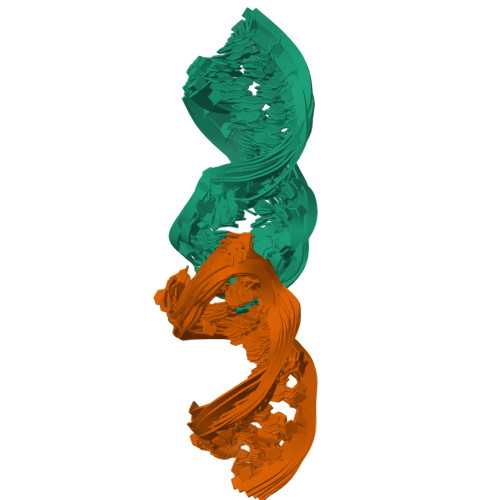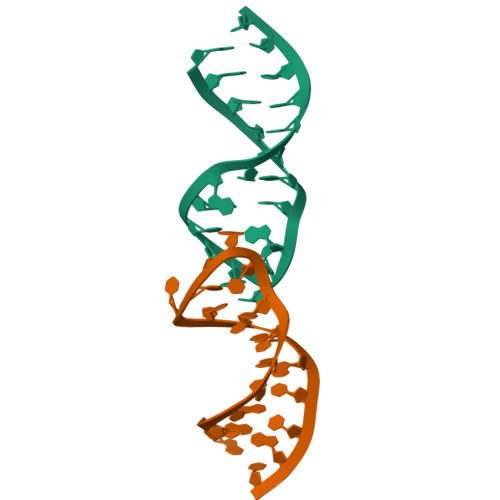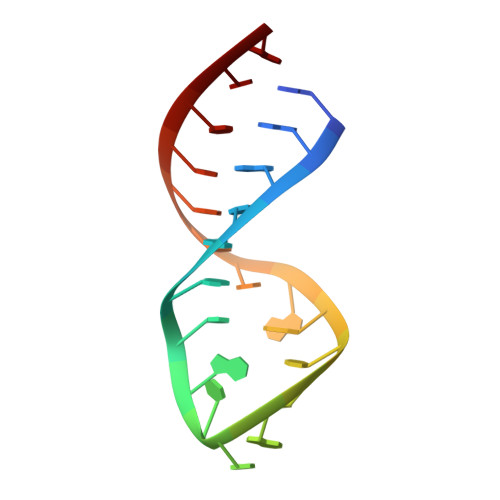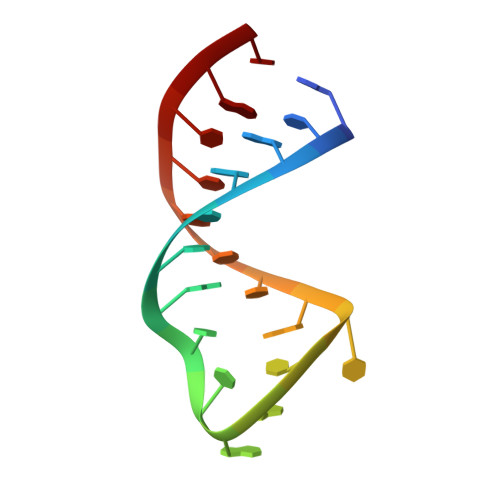Structural insights into substrate recognition by the neurospora varkud satellite ribozyme: importance of u-turns at the kissing-loop junction.
Bouchard, P., Legault, P.(2014) Biochemistry 53: 258-269
- PubMed: 24325625
- DOI: https://doi.org/10.1021/bi401491g
- Primary Citation of Related Structures:
2MI0 - PubMed Abstract:
Substrate recognition by the Neurospora Varkud satellite ribozyme depends on the formation of a magnesium-dependent kissing-loop interaction between the stem-loop I (SLI) substrate and stem-loop V (SLV) of the catalytic domain. From mutagenesis studies, it has been established that this I/V kissing-loop interaction involves three Watson-Crick base pairs and is associated with a structural rearrangement of the SLI substrate that facilitates catalysis. Here, we report the NMR structural characterization of this I/V kissing-loop using isolated stem-loops. NMR studies were performed on different SLI/SLV complexes containing a common SLV and shiftable, preshifted, or double-stranded SLI variants. These studies confirm the presence of three Watson-Crick base pairs at the kissing-loop junction and provide evidence for the structural rearrangement of shiftable SLI variants upon SLV binding. NMR structure determination of an SLI/SLV complex demonstrates that both the SLI and SLV loops adopt U-turn structures, which facilitates intermolecular Watson-Crick base pairing. Several other interactions at the I/V interface, including base triples and base stacking, help create a continuously stacked structure. These NMR studies provide a structural basis to understand the stability of the I/V kissing-loop interaction and lead us to propose a kinetic model for substrate activation in the VS ribozyme.
Organizational Affiliation:
Département de Biochimie et Médecine Moléculaire, Université de Montréal , C.P. 6128, Succursale Centre-Ville, Montréal, Quebec H3C 3J7, Canada.

















